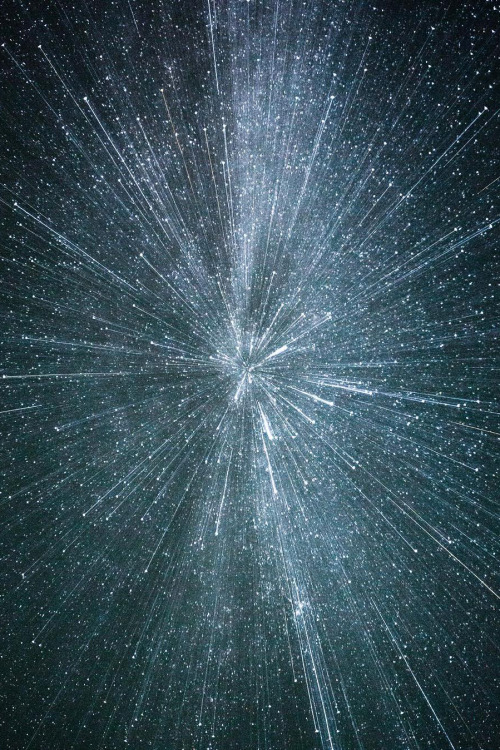Saturn Casts Shrinking Shadow Over Rings In NASA Photo

Saturn Casts Shrinking Shadow Over Rings in NASA Photo
On Earth, the change of the seasons can be marked by the length of the shadows cast by the sun. This approach also works on Saturn, where the shadow of the massive planet grows shorter each day.
A new photo from the Cassini probe shows the shadow of Saturn blanketing a large section of the planet’s ring system. But back in 2007, Cassini images showed Saturn’s shadow stretching well beyond the edge of the rings. The shortening of the planet’s shadow will continue as Saturn approaches a solstice in May 2017.
Read more ~ Space.com
Image:
The shadow of Saturn cast across the planet’s massive ring system, captured by the Cassini probe on May 21, 2016. Credit: NASA/JPL-Caltech/Space Science Institute
More Posts from Porcelainrobot and Others


Untitled // Sarah Green

Framed by Nature // Merlin Kafka








Snoqualmie Pass // Matt Kuma

Mount Rainier // Dipsauce

Alphonse Mucha | The Months - December, 1899.

The European Southern Observatory (ESO) has released a beautiful new image of the open star cluster Messier 7. This new view of a middle-aged star cluster (also known as “M7”) comes in the form of an ESO photo release. Using the MPG/ESO 2.2-metre telescope at La Silla Observatory in Chile, the image was taken with the Wide-Field Imager and shows a window of sky about 1° across, or twice as wide as a full Moon. The cluster stars are the big, (mostly) blue ones in the foreground, about 1000 light years away; the thousands of other, fainter stars are many times more distant as the line of sight in this view is one of the most dense through our Galaxy’s disk.
At 200 million years old, Messier 7 is a snapshot in the middle of the evolution of a typical star cluster: the gas and dust from which the stars formed are long gone, but the resulting stars are still near each other in space. The blue stars are evolving rapidly and will be the first to disappear, while the longer-lived cluster stars will slowly drift apart over the next billion years or so. According to the photo release, “As they age, the brightest stars in the picture — a population of up to a tenth of the total stars in the cluster — will violently explode as supernovae. Looking further into the future, the remaining faint stars, which are much more numerous, will slowly drift apart until they become no longer recognisable as a cluster.”
-
 wolfcreek81 liked this · 3 years ago
wolfcreek81 liked this · 3 years ago -
 missruckus liked this · 8 years ago
missruckus liked this · 8 years ago -
 daniele-piccioni liked this · 8 years ago
daniele-piccioni liked this · 8 years ago -
 eat-theother reblogged this · 8 years ago
eat-theother reblogged this · 8 years ago -
 golddst reblogged this · 8 years ago
golddst reblogged this · 8 years ago -
 oracleinthemist reblogged this · 8 years ago
oracleinthemist reblogged this · 8 years ago -
 kidkytes reblogged this · 8 years ago
kidkytes reblogged this · 8 years ago -
 g5nn21f1-blog liked this · 8 years ago
g5nn21f1-blog liked this · 8 years ago -
 eldiabloindisguise liked this · 8 years ago
eldiabloindisguise liked this · 8 years ago -
 us2626-blog liked this · 8 years ago
us2626-blog liked this · 8 years ago -
 what-a-daringdream-blog reblogged this · 8 years ago
what-a-daringdream-blog reblogged this · 8 years ago -
 shitlet reblogged this · 8 years ago
shitlet reblogged this · 8 years ago -
 tiranosauriosrex liked this · 8 years ago
tiranosauriosrex liked this · 8 years ago -
 lex-fukface reblogged this · 8 years ago
lex-fukface reblogged this · 8 years ago -
 mcm-curiosity liked this · 8 years ago
mcm-curiosity liked this · 8 years ago -
 mathropolitan reblogged this · 8 years ago
mathropolitan reblogged this · 8 years ago -
 sequenceshepard liked this · 8 years ago
sequenceshepard liked this · 8 years ago -
 turkeythunder liked this · 8 years ago
turkeythunder liked this · 8 years ago -
 vroomkat liked this · 8 years ago
vroomkat liked this · 8 years ago -
 potatojunkie10 liked this · 8 years ago
potatojunkie10 liked this · 8 years ago -
 sorceressandy liked this · 8 years ago
sorceressandy liked this · 8 years ago -
 lord-ramrod liked this · 8 years ago
lord-ramrod liked this · 8 years ago -
 glorious-buttwings liked this · 8 years ago
glorious-buttwings liked this · 8 years ago -
 andresmadafakas liked this · 8 years ago
andresmadafakas liked this · 8 years ago -
 hellisstyless reblogged this · 8 years ago
hellisstyless reblogged this · 8 years ago -
 errantearte liked this · 8 years ago
errantearte liked this · 8 years ago -
 cognitivelyadvancedzygote liked this · 8 years ago
cognitivelyadvancedzygote liked this · 8 years ago -
 anibalfaso-blog liked this · 8 years ago
anibalfaso-blog liked this · 8 years ago -
 unolespirit liked this · 8 years ago
unolespirit liked this · 8 years ago -
 ohnomojo-blog1 liked this · 8 years ago
ohnomojo-blog1 liked this · 8 years ago -
 space-today reblogged this · 8 years ago
space-today reblogged this · 8 years ago -
 cruisininfinity-blog1 reblogged this · 8 years ago
cruisininfinity-blog1 reblogged this · 8 years ago -
 itzio-o liked this · 8 years ago
itzio-o liked this · 8 years ago -
 porcelainrobot reblogged this · 8 years ago
porcelainrobot reblogged this · 8 years ago -
 saturn--rising reblogged this · 8 years ago
saturn--rising reblogged this · 8 years ago -
 lizzy-thelizzard reblogged this · 8 years ago
lizzy-thelizzard reblogged this · 8 years ago -
 tisorridalamor reblogged this · 8 years ago
tisorridalamor reblogged this · 8 years ago -
 theevilelflord reblogged this · 8 years ago
theevilelflord reblogged this · 8 years ago -
 ambidexedition liked this · 8 years ago
ambidexedition liked this · 8 years ago
